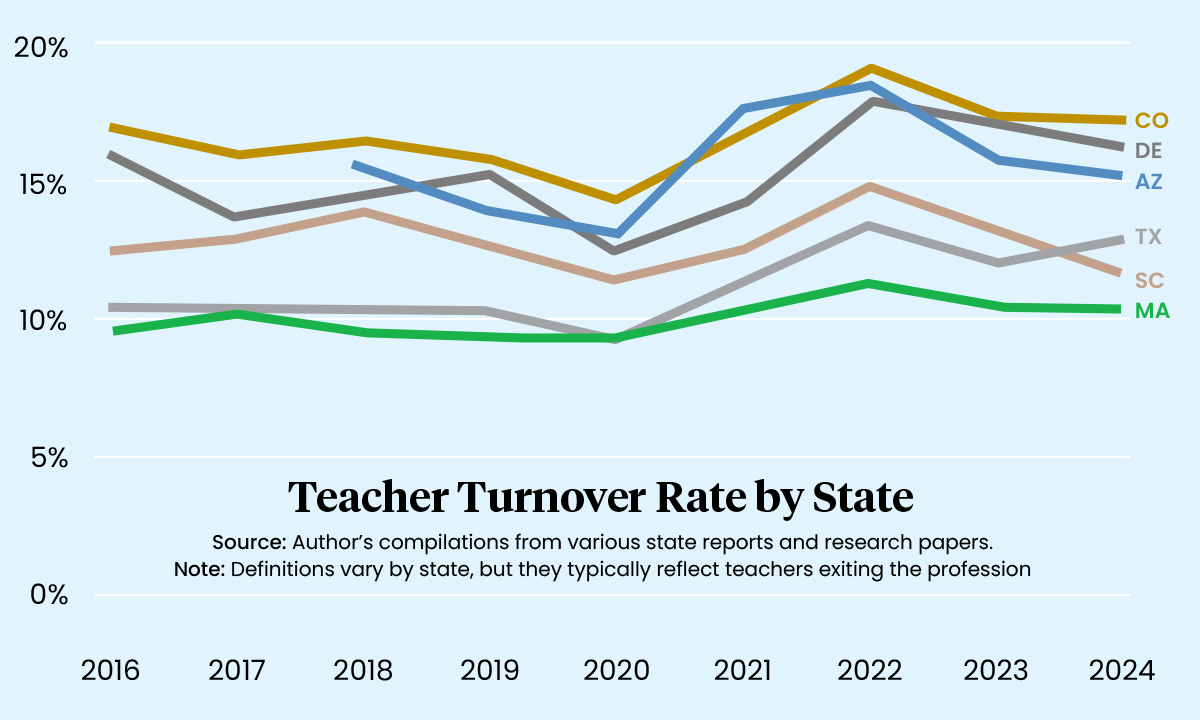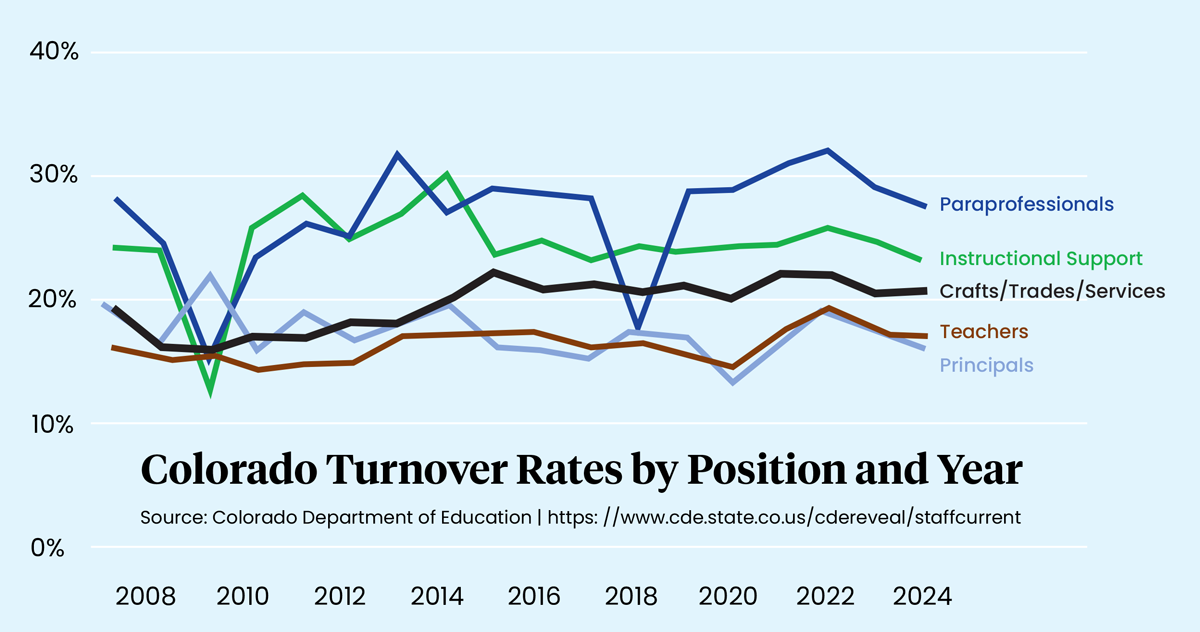Teacher Turnover Spiked During COVID. But It’s Now Fallen for 2 Years in a Row
Aldeman: Rural and low-income schools and special ed are still suffering. But state documents and research reports shows consistent patterns overall.

Get stories like this delivered straight to your inbox. Sign up for The 74 Newsletter
According to the latest data, teacher turnover rates have been coming down for the last two years.
That finding comes from a hodgepodge of state documents and research reports. With the caveat that those sources may count things in slightly different ways and at different time periods, the pattern that emerges is consistent.
In fall 2020, the country was still in the thick of the COVID pandemic. The economy was on uncertain footing, many schools stayed remote and teacher turnover rates fell. That is, more educators stayed put.
But as the world began to open up, teachers started leaving in higher numbers, first in 2021 and then again in 2022. That fall, the country hit modern highs in the percentage of teachers leaving their positions.
But those moves were temporary. Last year, Wall Street Journal (and former 74) reporter Matt Barnum found that teacher turnover rates fell in 2023 for each of the 10 states for which he was able to find data. Not all the changes were big, but the trends were all falling.
For fall 2024, the current school year, I was able to find data from six states: Colorado, Delaware, Arizona, Texas, South Carolina and Massachusetts. All but Texas experienced year-over-year declines in teacher turnover.
The federal Bureau of Labor Statistics’ Job Openings and Labor Turnover survey shows similar trends nationally. For a broad category that includes all state and local government education employees, employee quit rates surged in 2022, fell in 2023 and then decreased again in 2024. Similarly, the American School District Panel from RAND found turnover rates falling among teachers and principals in the fall of 2023 and 2024. Notably, the biggest declines were seen in the places where turnover had surged the most during the initial pandemic years.
You could squint at the data closely and note that turnover rates are still a bit higher than where they were pre-pandemic. But zoom out, and the numbers look broadly similar to historical trends. For example, Dan Goldhaber and Roddy Theobald looked at teacher turnover rates in Washington state from 1984-85 to 2021-22 and found that total turnover, including teachers who left the profession, switched schools, or left teaching but stayed in education, has ranged from about 14% to 20% in Washington since the mid-1980s. It did indeed hit a modern peak (of 19.8%) in 2021-22, but Goldhaber and Theobald’s more recent work in Washington showed turnover was again starting to fall in 2023.
How should we put these figures in context? First, despite its recent surge, public education has maintained lower quit rates than any other industry except for the federal government. In any given month, less than 2% of public education employees leave their jobs, compared with rates twice that high in the private sector.
Within public education, teachers tend to have lower turnover rates than other employees do. Colorado, for example, has published turnover data by role since 2007. The chart below shows the results. Teachers (in red) tend to have similar turnover rates as principals (light blue), but those are much lower than the turnover rates in other roles. Paraprofessionals, in dark blue, typically have turnover rates that are 10 to 15 percentage points higher than teachers do.

How should we square this with soft data coming out of teacher surveys? Those results are messier, but they could fit the same basic trajectory. One high-quality study out of Illinois found that teacher working conditions worsened substantially from 2021 to 2023. And research looking at a range of survey and pipeline indicators suggested that the state of the profession was at 50-year lows as of data ending a couple years ago. More recently, Education Week’s Teacher Morale Index showed a significant rebound in 2024-25 over the prior year.
None of this is to say that policymakers should be content with the status quo. And indeed, there continue to be problem spots. Rural schools, those in low-income areas and certain teaching roles, especially in special education, tend to have higher turnover rates than others. But those call for more specialized and tailored solutions rather than universal policies.
Moreover, policymakers can at least take heart that the worst of the teacher turnover surge appears to be in the rearview mirror.
Get stories like these delivered straight to your inbox. Sign up for The 74 Newsletter

;)
